Simple tips on how to enjoy sashiko to the fullest | Sashiko tools, workspace & friends
Table of Contents
Tools
No kidding: good tools are crucial for maximum enjoyment! Obviously, that is not only true for sashiko. But you only use four different tools for sashiko so it makes sense to use only the best.
The needle
A good sharp needle that has the right length and size for your project is hands down the biggest factor when it comes to whether you will enjoy sashiko or not. Considering that sashiko needles are not even expensive, it would make little sense to not invest in a quality needle. If you are unsure which needle to choose, you can find some helpful hints here.
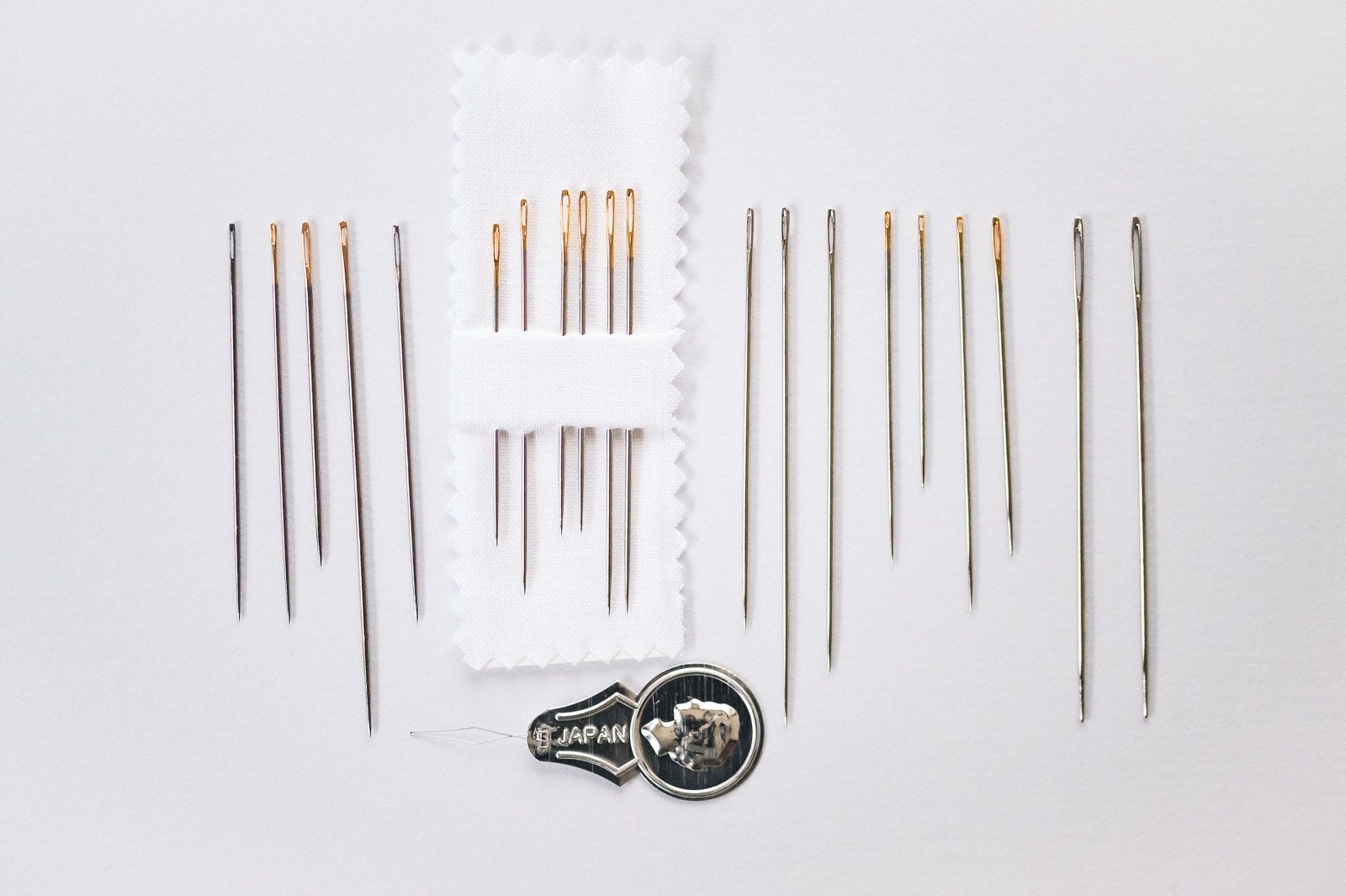
The needle impacts not only the how of your stitching but will also influence the outcome. If you use a needle that isn't sharp, you may put unnecessary strain on the fabric, reducing its durability.
And durability is what sashiko was originally all about, so a good needle seems like a no-brainer to me.
My recommended needle if you are just starting out is this one.
The thread
Same as with a good needle, a good quality thread makes for a good investment. Good sashiko thread doesn't easily fray and it won't rip.
Whereas a good needle has the most impact on whether or not you can stitch comfortably, good thread will only show its most impressive features after having been washed a couple of times.
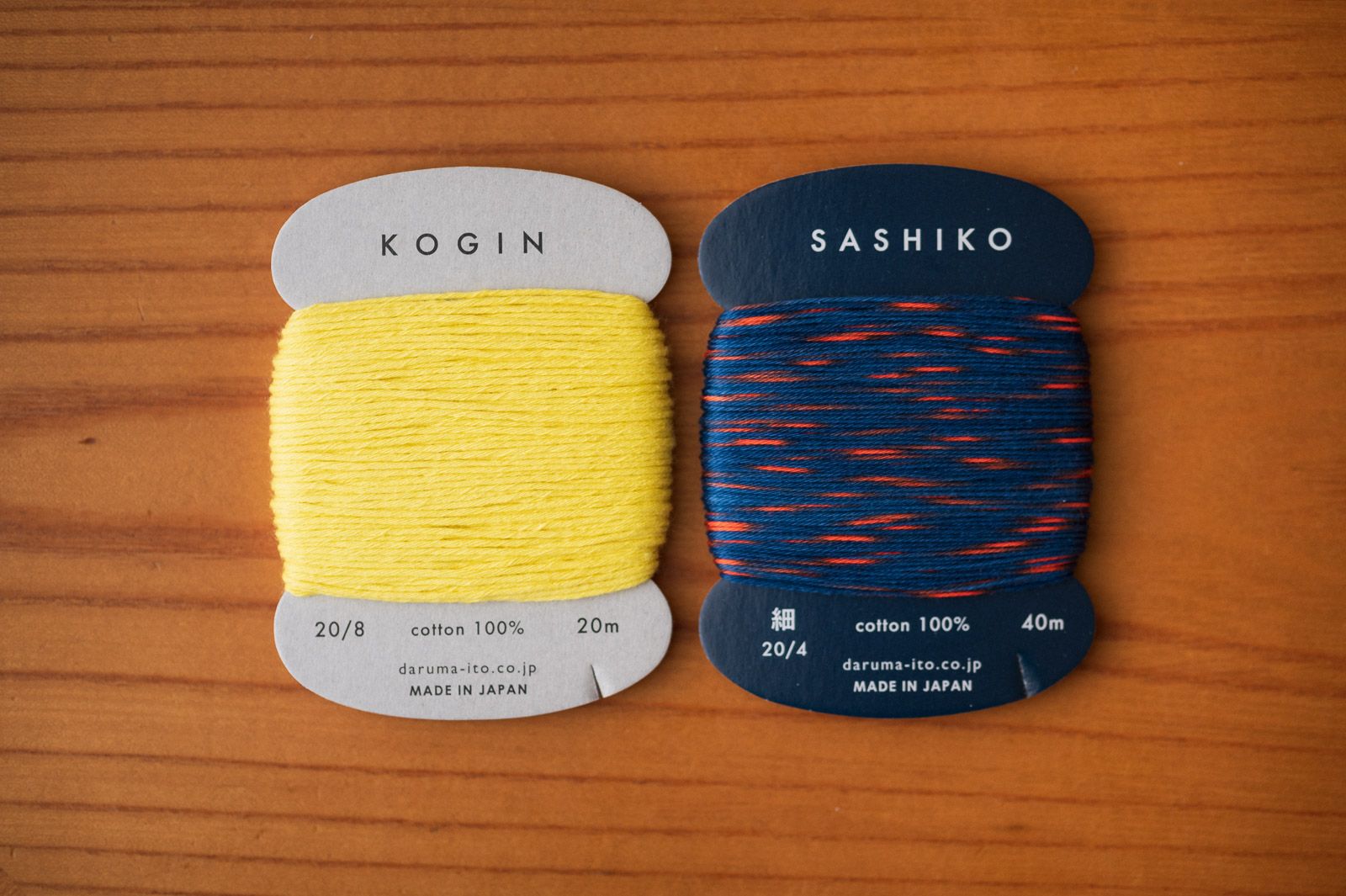
The main feature of great sashiko thread is that it will eventually become part of the fabric because its individual fibers are soft.
Because of the softness of sashiko thread, it will increase in volume ever so slightly when washed. Thanks to this characteristic, you get away with not making any knots in sashiko stitching.
But despite its softness, sashiko thread is extremely durable. After all, sashiko's original purpose was to make clothes more durable, so it wouldn't make sense if the thread itself wasn't durable.
Like embroidery thread, sashiko thread consists of several strands, but it is meant to be used without dividing it up into different strands. Unlike embroidery thread, sashiko thread has no sheen and its simplicity compliments the patterns perfectly.
As Yanagi Muneyoshi, who is often referred to as “the father of the folk art movement” in Japan, said in concern to sashiko:
込み入ったごたごたしたものに美しさが却って欠けてくるのは、当然な命数ではないか。
Complicated, busy sashiko, if anything, loses its beauty and rightly reaches therefore the end of its life-span.
Yanagi Muneyoshi
The thimble
When I got into sashiko, I used a thimble right from the start.
Wait, not exactly. I had the thimble on my finger, but I didn't actually use it. When I finally figured out how to use a thimble, I couldn't understand how I could think that sashiko a lovely pastime without one.
But two of my favorite sashiko artisans, faboomae and JunAle don't use thimbles. Not because she doesn't know how to, but she enjoys doing sashiko without one.
So using a thimble is definitely not a necessity to create stunning sashiko. Just try out what works for you. You might like using a thimble, but you may as well be completely happy without one. Your choice.
While making your own needles, thread or fabric may prove quite difficult, making your own thimble from leather is not a difficult task, nor is it expensive.
I actually bought my first sashiko thimble without even knowing what it was because I liked the look of it. After becoming addicted to sashiko I just thought it might be fun to customize my tools.
Making a thimble seemed like an easy task, so that's what I did. I really like that it is mine and if you think you might enjoy making your own thimble, I encourage you to give it a try.
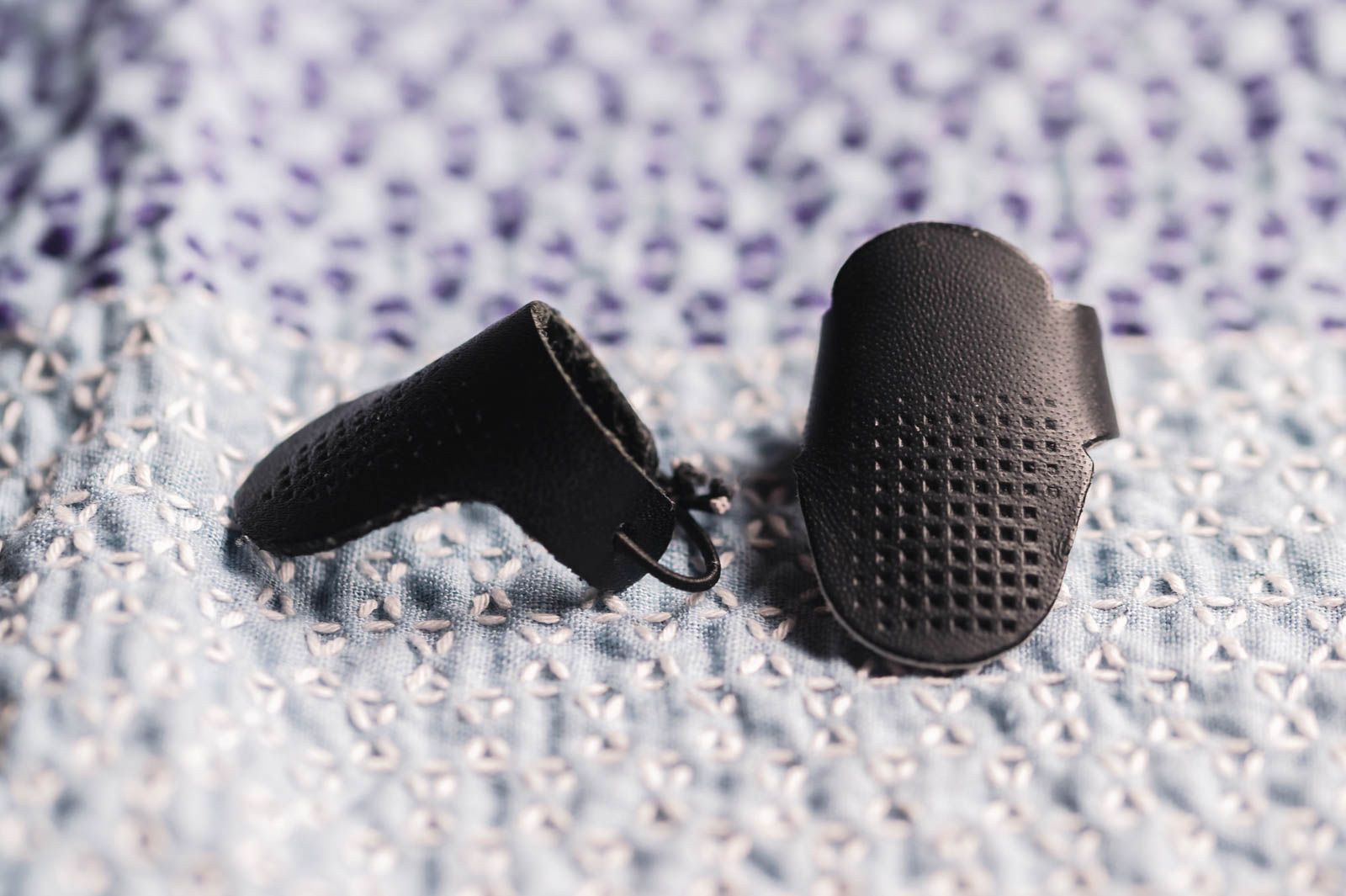
Additional tools
Storage, pattern stencils, rulers, chalk and pencils to transfer or draw your patterns, books... there is an endless list of things that you could add to evolve sashiko. It can be quite fun to buy additional tools and get new ideas along the way.
But don't forget that sashiko evolved in an environment of sparsity, not affluence. Take a moment to think about what sashiko is to you before you rush any unnecessary purchases.
Surroundings
I enjoy doing sashiko no matter where I am. I become my own little sashiko island and nothing will bother me. I do sashiko while I am waiting at the dentist's, I do sashiko while my kids are running in circles around me and I do sashiko in the car as long as I'm not the driver.
But I admit that I enjoy doing sashiko more if I like my surroundings. For me, the perfect setting includes good light, a comfy place where I can sit with folded legs, and sometimes music.
You may have different preferences. But whenever possible, I recommend doing sashiko in a properly lit environment. Especially in the beginning, when you are still concentrating on different things all at once, you may not even notice that the strain you put on your eyes is eating away at your enjoyment.
Switch the light on, make yourself comfortable and let yourself turn into a little sashiko island.
Share & Connect
Find like-minded people who will appreciate your sashiko. For me, sashiko is a great source of inspiration. And while I probably enjoy the actual stitching most about sashiko, I also really enjoy the time I spend talking with my sashiko friends about our different projects, new pattern ideas, and needle assessments.
If you haven't found anyone near you that shares your interest, you could try connecting with people online. I am always happy to connect with other sashiko enthusiasts, so feel free to drop me a line. I'd love to hear about which projects you made and the plans you have. Maybe I can even help you out with any questions you have.
While some people may not be into doing sashiko themselves, they may very well appreciate a gift. Giving away your finished projects and creating joy is also a very nice way to share your love for sashiko, don't you agree?
If you made something nice and don't want to give it away but still want to share, please tag #stitchesontherun so I can take a peek. That would be lovely! Thanks♡
If you are not sure how to start, here you can find the basic rules of sashiko.
Stay tuned and keep stitching!


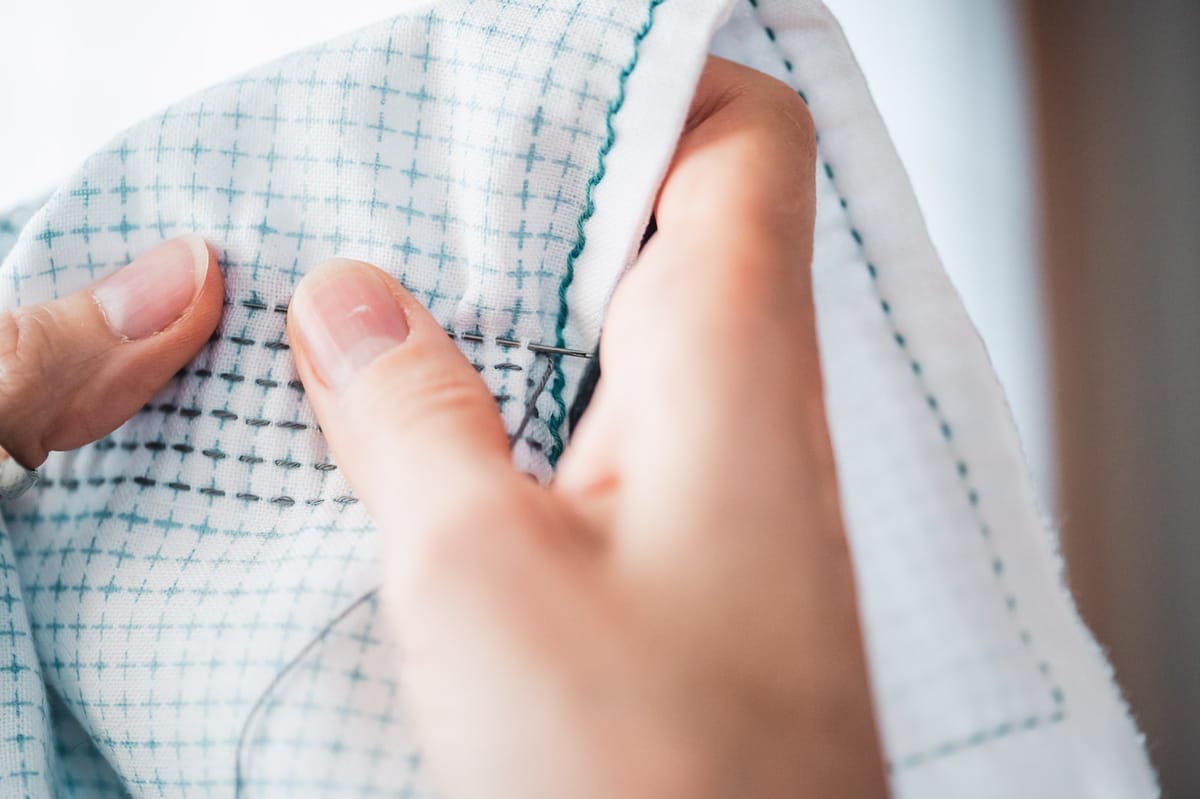

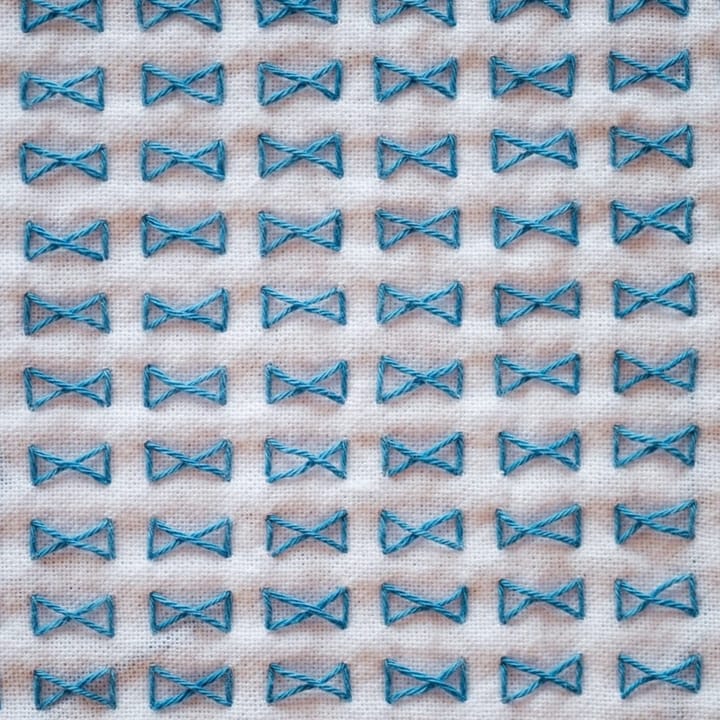
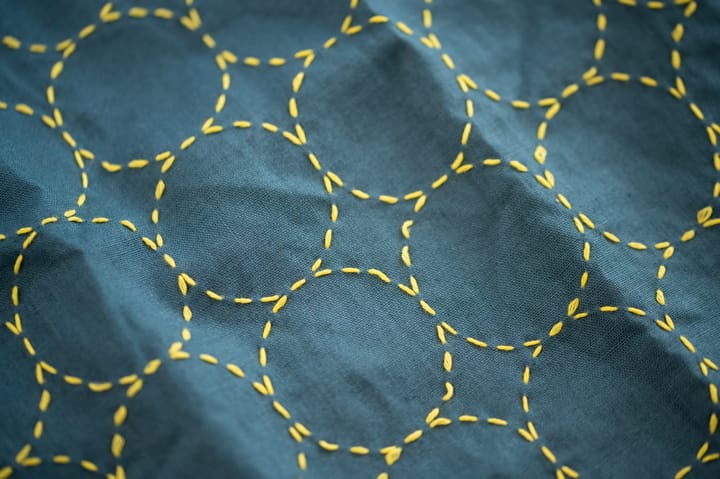
Comments ()